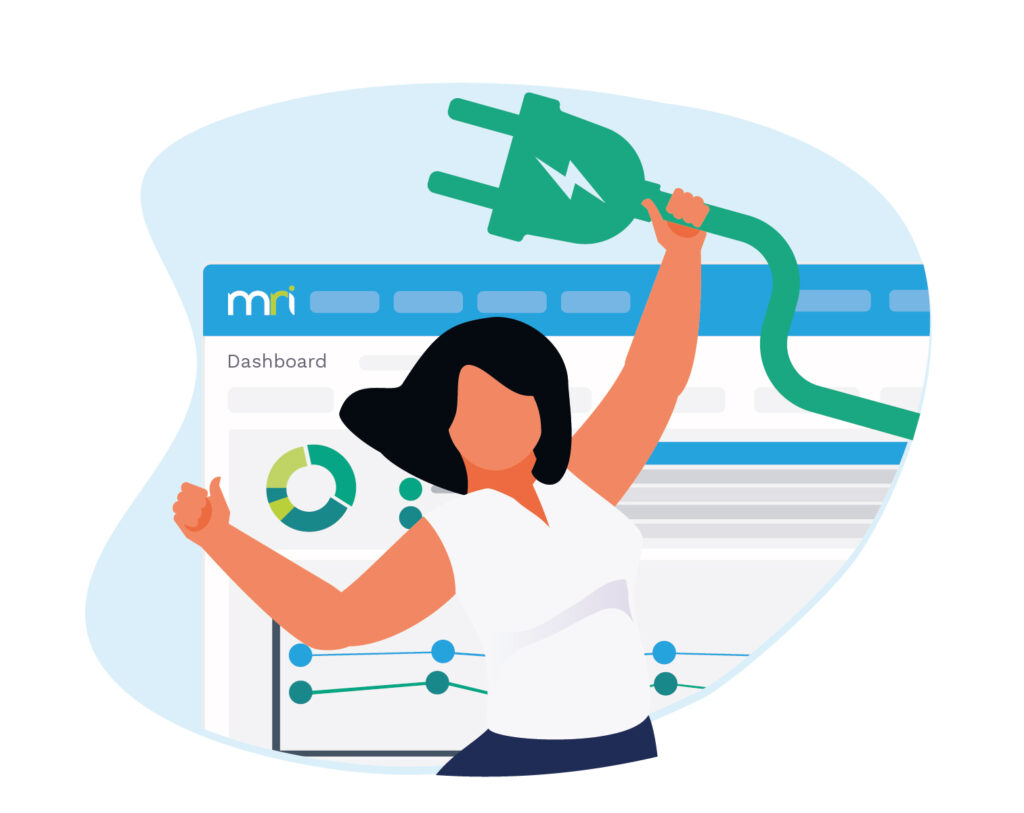Dealing with changing industrial energy management priorities
Industrial energy management: A short guide for engineering managers
One of the main challenges Engineering Managers face in the product development life-cycle is the introduction of new corporate sustainability goals. As Engineering Managers are principally concerned with product development, when new energy reduction policies are put into place – beckoning a change in industrial energy management – it becomes an act of balancing priorities.
The challenge is supporting operational performance and meeting energy efficiency/reduction goals – and often this requires manpower and the right technology, something the Engineering Manager may not have.
In this blog, we’ll explain how Engineering Managers can improve production efficiency to meet corporate sustainability goals and improve industrial energy management.
Set up meters for data standardisation and consolidation
To meet corporate sustainability goals, Engineering Managers need to have a comprehensive understanding of energy consumption and usage across the plant; only then can they make changes.
To achieve this, Engineering Managers need to have standardised metering across all plant utilities to work out what can be turned off and when. If meters are unavailable in certain areas (or not all of the same type) understanding how much energy is being used, by what and when, will be far more difficult than it needs to be.
Standardised meters will ensure consistent data collection. That data can then be confidently fed into a central platform for end-to-end visibility and accurate analysis. Ideally, the platform should be capable of automatic data capture, regardless of utility source or data, in real time.
Being in a position to turn off non-critical production functions and reroute energy to critical production functions will help to increase productivity, reduce costs and improve industrial energy management.
Find out how to conserve energy in your commercial building with our five top tips.
Use a utility management system (UMS) for data aggregation and reporting
Effective reporting on energy consumption requires data aggregation (or standardising), enabling contextual comparison both between business units and functions and against specific metrics. Without it, Engineering Managers will get a skewed view of performance.
Implementing a UMS will streamline data integration and reporting, allowing business units and functions to be compared in context, as well as providing the means to compile accurate data. Engineering Managers can also use the UMS to correct issues, identify patterns and address anomalies. For example, an Engineering Manager might find that – upon comparing the energy usage of two boilers – one is far more efficient than the other, despite identical use time and age.
This would highlight a performance issue with one of the boilers, identifying an opportunity to improve energy utilisation and reduce costs arising from underutilisation.
Without this kind of technology in place – along with metering – isolating these issues will be a difficult, manual process of trial-and-error. Industrial energy management is about efficient energy monitoring and reallocating resource at the right time to support production initiatives.

Devise energy targets and start measuring performance
With data standardised and a UMS in place, Engineering Managers now have a complete overview of energy consumption and can, therefore, devise realistic energy targets and a strategy to achieve them.
This is precisely what’s necessary to achieve corporate sustainability goals. The previous two points lay the foundation for effective reporting and utility management – but the real crux is being able to make a baseline and track energy performance from that point onwards.
Targets can be set in the UMS based on aggregated data (ensuring no skewed reporting), meaning everyone in the business can see the progress towards the goals. It’ll also be far more consistent and less error-prone than manual reporting.
Change management and continuous improvement
New reporting and data visibility will lay the groundwork for a successful change management program and ensure continuous improvement.
The fundamental issue is that it cannot be done by the Engineering Manager alone – but with the right technology in place, it will be easy to create a culture where everyone champions energy efficiency.
Employees at all levels will understand utility key performance indicators (KPIs) and have access to the detailed data they need to report on energy saving targets, address problems, use the UMS without issue, and support corporate sustainability goals.
In both the short and long-term, the UMS will help to reduce operational costs and improve performance. As critical components in the production lifecycle are further bolstered by resource from non-essential plant functions (and now utilise energy in an efficient manner), it becomes possible for Engineering Managers to balance conflicting priorities: deal with industrial energy management and get the product out the door.

How to achieve net zero targets and keep on top of your ERIC reporting
With the roadmap to achieve net zero targets, compliance headaches, ERIC reporting relying on data across multiple groups and departments, NHS Energy Managers have a lot on their plates! Siloed data on different systems is not only causing inefficien…

